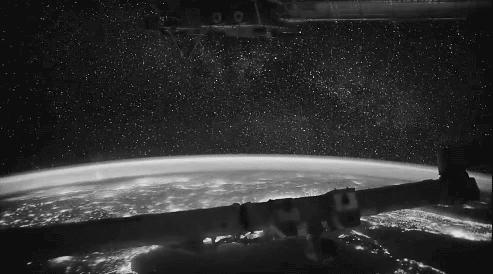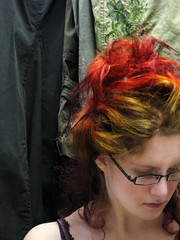Hominid from Brian Andrews.
Hominid is an animated teaser based on the Hominid series of photo composites by Brian Andrews, described as “photo composites made from human and veterinary images”.
-::-
A weekly movie night has sprung up in the homeless-yet-have-a-place dichotomy I’ve been inhabiting. Challenging films, insistent and smart, things I haven’t seen before, but have dearly wanted to. An exquisite corpse of connections from week to week.
It started with Fassbinder’s Macbeth, a faithful and brutal retelling of Shakespeare drenched in colour, shouting, and death, then moved to Far Side of the Moon, written, directed, produced, designed, and starring Robert LePage. Based on his visually striking theater production of the same name, he plays two Quebecois brothers awash in tides of their mother’s recent death, set in the context of the USSR-United States Space Race of the 1960s.
The loss of a parent, the small kingdom of the stage, brothers, strife. Small threads, alike in dignity.
LePage is known in Canada as a national treasure, the intellectual French-Canadian prince of visual delights. The transitions in his films are especially beautiful, as the round door of a coin laundry becomes the port of a space capsule or the green screen background of a weather channel becomes the wall of someone’s apartment. They are playful and unexpected, much like the films of Michel Gondry, the French-Parisian master of surprise and whimsy, who directed the next choice, Mood Indigo.
Based on a book written in 1947 and set in a blur between an imaginative retro-future of when the book was written and the modern day, it concerns a joyful couple who meet, fall in love, and marry, but the wife, played by Audrey Tatou, falls ill with a flower in her lung. What was bright, grows dark.
Next, pivoting on the love story, the toxic flower, the here and now, we showed Upstream Color, written, directed, produced, edited, composed, designed, cast by and starring Shane Carruth, the man responsible for Primer, which details the path of a man and a woman who fall in love after being poisoned by a parasite from a specific flower. From darkness, comes light.
It ends with an unconventional family, isolated in the country, like the subjects of Dogtooth, a Greek film by Yorgos Lanthimos we’re showing this week.




